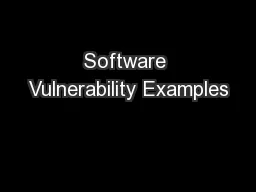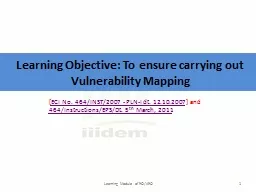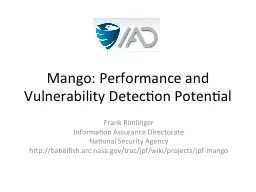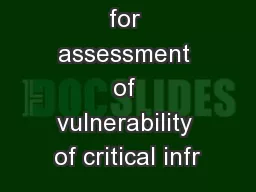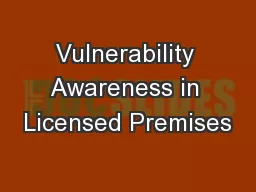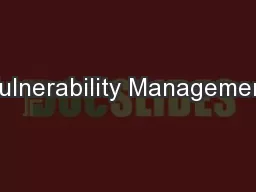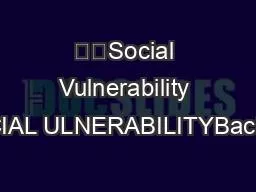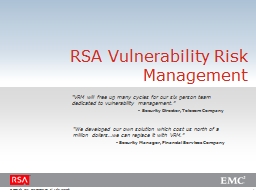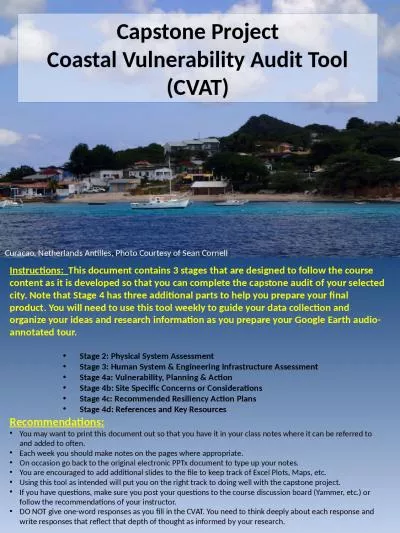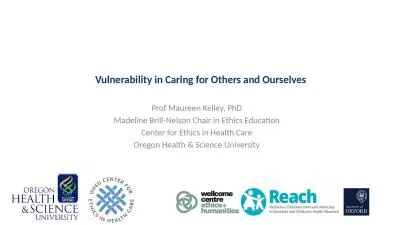PPT-Software Vulnerability Examples
Author : kittie-lecroy | Published Date : 2016-04-09
SQL Injection Example Scenario Imagine a form in a webpage with two input text boxes username and password The form gets submitted to a CGI script that constructs
Presentation Embed Code
Download Presentation
Download Presentation The PPT/PDF document "Software Vulnerability Examples" is the property of its rightful owner. Permission is granted to download and print the materials on this website for personal, non-commercial use only, and to display it on your personal computer provided you do not modify the materials and that you retain all copyright notices contained in the materials. By downloading content from our website, you accept the terms of this agreement.
Software Vulnerability Examples: Transcript
Download Rules Of Document
"Software Vulnerability Examples"The content belongs to its owner. You may download and print it for personal use, without modification, and keep all copyright notices. By downloading, you agree to these terms.
Related Documents

